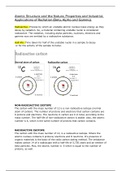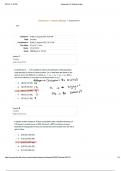Lecture notes
3.2.4.4 Population change
- Module
- 3.2.4.4 Population change
- Institution
- AQA
Notes on: - Factors in natural population change: the demographic transition model, key vital rates, age–sex composition; cultural controls. Models of natural population change, and their application in contrasting physical and human settings. Concept of the Demographic Dividend. - Interna...
[Show more]












